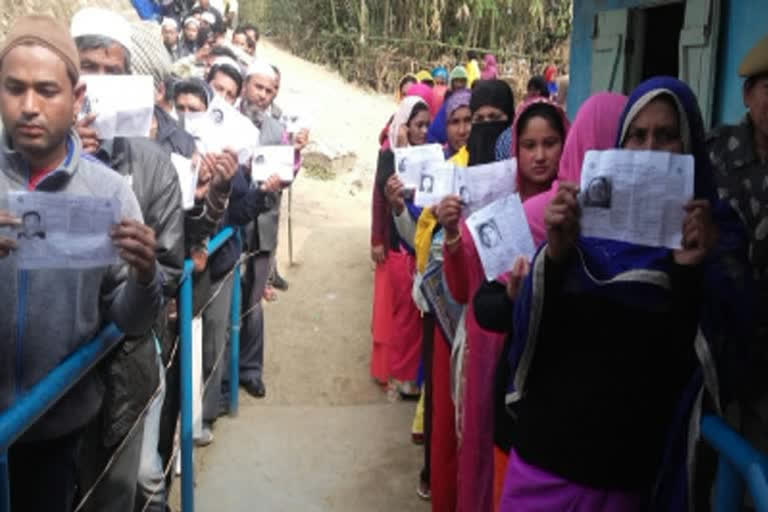Lucknow: Voting was going on Monday for the second phase in the Uttar Pradesh Assembly elections in 55 seats of nine districts of western UP comprising Saharanpur, Bijnor, Amroha, Sambhal, Moradabad, Rampur, Bareilly, Badaun and Shahjahanpur. Considering the Muslim and Dalit population in these seats, this election is challenging for all parties as compared to the first phase.
Notably, Muslim voters will decide the fate of candidates in more than 25 Assembly seats in this phase while in 20 seats, the number of Dalit voters is more than 20%. The SP-RLD alliance is seen in a strong position in these districts while the BJP may face problems due to the displeasure of farmers.
Stronghold of SP-BSP
At the same time, due to the high number of Muslim and Dalit voters in the Assembly seats included in this phase, the hold of the Samajwadi Party and Bahujan Samaj Party is considered to be strong here. However, in the 2019 Lok Sabha elections, when the SP had an alliance with the BSP and the RLD. The BSP won four out of the 11 seats Amroha, Bijnor, Nagina and Saharanpur while the Samajwadi Party won Rampur, Moradabad and Sambhal.
The Dalit and Muslim population is an important factor in the victory of nominees in 35 seats in these districts while the number of Jat and OBC voters is also significant here. At the same time, Badaun is considered to be a Yadav-dominated district due to which it is considered a stronghold of the Samajwadi Party.
Know why the situation changed?
In the 2017 Assembly elections, the Modi wave was seen in the entire western UP. The BJP was successful in getting the Hindu vote in its favour due to communal polarisation on the issue of Kairana and Muzaffarnagar riots. But now, the situation is different. In this election, the farmers are very angry with the BJP due to the non-procurement of the crop and the delay in payment of sugarcane arrears.
If the political experts of the state are to be believed, due to the high number of Muslim and Dalit voters in the districts included in the second phase, the BJP does not see much benefit here. Also, the effect of RLD is not much visible in this phase. Due to this, the Samajwadi Party can get an advantage in Muslim seats. Whereas in other seats, there is scope for BJP to win some seats.
In the 2017 Assembly elections, the BJP had got a big advantage in non-Muslim majority seats, but this time there is more possibility of loss in some seats than last time. In 2017, out of 55 seats, BJP won 38 seats, SP 15 and Congress two seats.
Read: Yogi, Akhilesh two sides of same coin: AIMIM chief Owaisi



